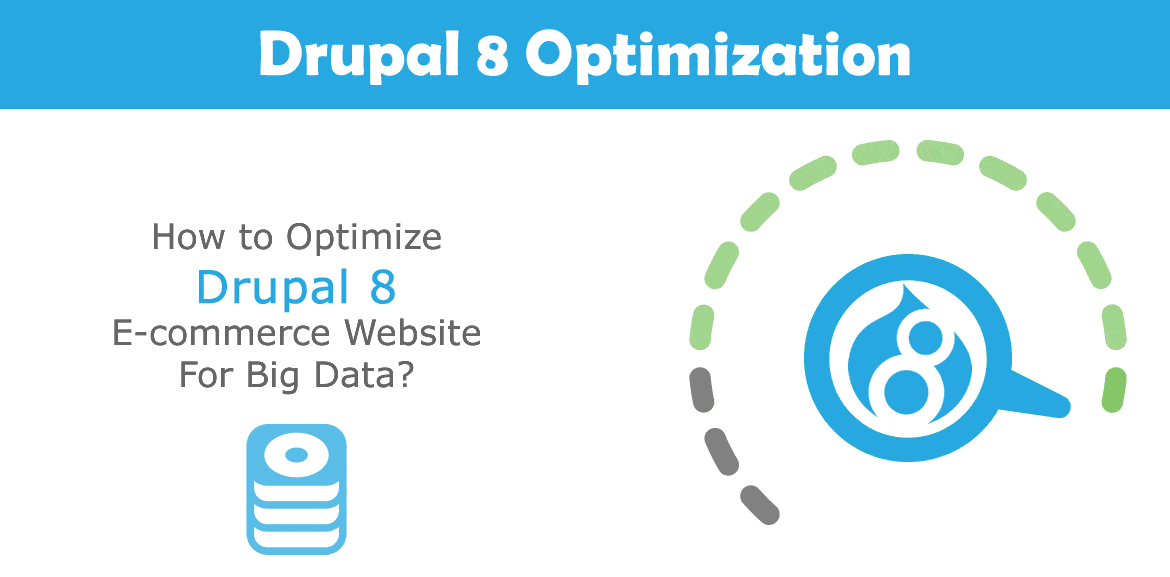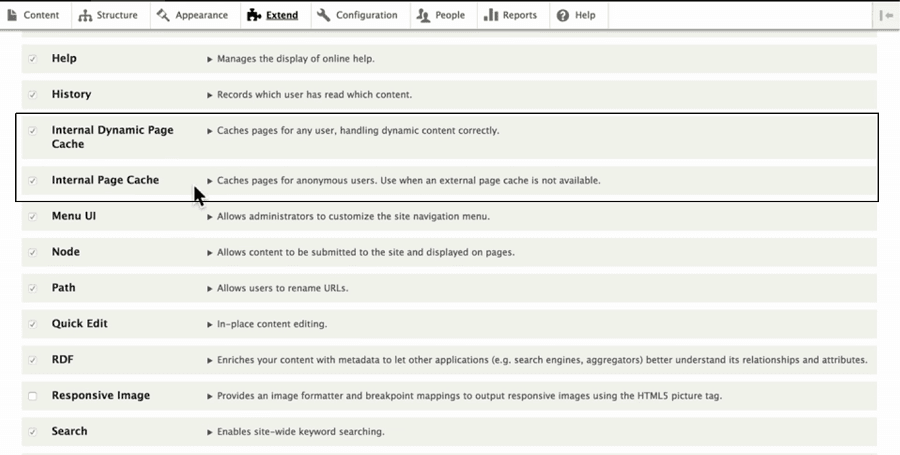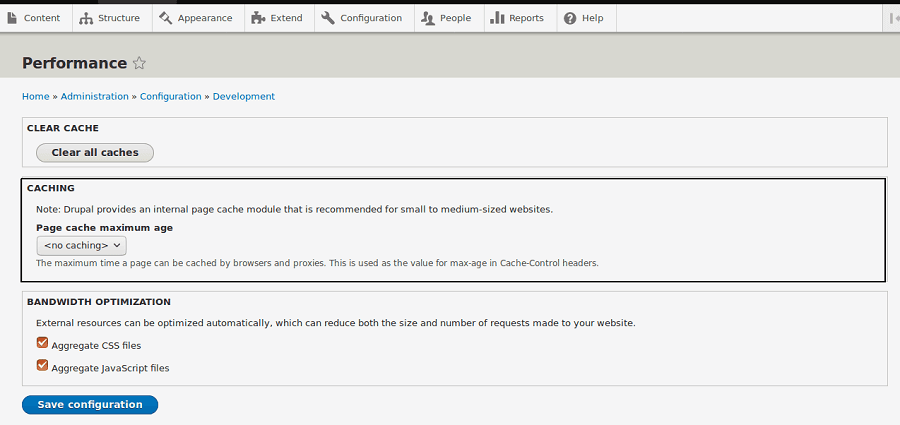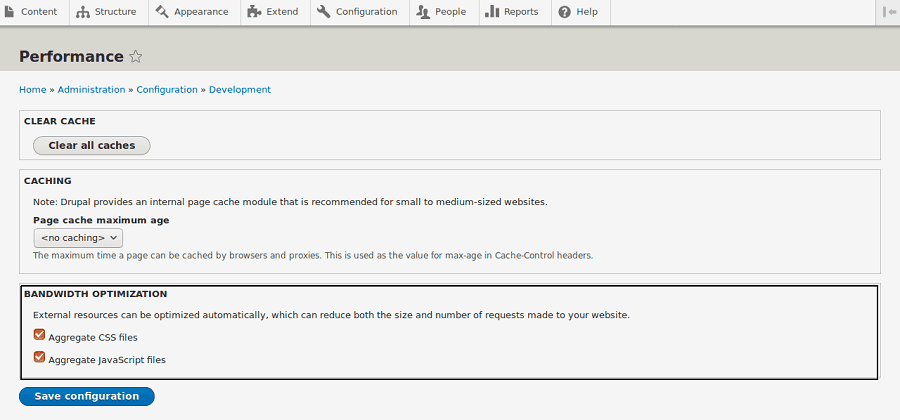The concept of Big Data is not new and it has been taking the e-commerce realm by storm. It has enabled online retailers to judge the demands of customers by observing their previous purchase behaviour.

No wonder so many e-commerce owners are approaching us with Big Data projects as they want to leverage it for gaining competitive advantage. One of our clients approached us with a mediocre Drupal e-commerce website for optimizing it for Big Data.
Being a Drupal development company, we are proficient in enhancing performance for Drupal websites overcoming all the challenges that comes in the way. In today’s post we would discuss about how to improve performance in a Drupal 8 website, let’s first discuss about the importance of Big Data for our new readers.
Why is Big Data important?
Big Data, as we know, means a large volume of data that is collected, stored and analyzed through different means to get actionable insights which can be utilized by your organization to make informed decision and to increase efficiency.

Big data can be understood via three dimensions called the 3Vs of Big Data – volume, velocity and variety.
Volume – Today enterprises are aflood with ever-increasing data of all types, amassing even petabytes of information. The data sources include social media, business transactions, sensor data and information from various devices.
Velocity – The Big data must be used as it streams, especially for time-sensitive processes such as detecting fraud. Also data must be analyzed in real-time in order to maximize its value.
Variety – Data can come in any format that may be structured or unstructured like sensor data, text, audio, video, log files, etc. When these data are analyzed together, new insights are found.

The importance of Big Data revolves around how efficiently you can utilize your data and open doors to endless possibilities. Big Data can help you:
- To bring down costs by identifying more efficient ways of doing business.
- To make informed decision faster.
- To create new products as per customer requirements.
- To understand market conditions better by analyzing customers’ purchasing behaviour.
- To improve and monitor the online presence of your business by performing sentiment analysis.
You know that how important it is to enhance the performance of your website prior to leveraging Big Data for your e-commerce website. Let’s find out how our team of Drupal Specialists improved the performance of a Drupal 8 e-commerce website.
How Drupal Specialists did Performance Optimization in Drupal 8?
A multi-vendor e-commerce site will have colossal of data in terms of products and product categories, search volumes, traffic, etc. So, it is very important that you make sure that your website doesn’t break down when there is high traffic.
There are specific modules, tools and techniques in Drupal 8 for performance optimization, the popular technique among them is caching.
Caching
Caching is a process of storing web data (HTML, CSS, images) or readable content in some accessible space called cache memory when a user requests for web page content on your site for the first time. As a result, on subsequent requests of the same page, the loading of web page is faster as the stored data is retrieved and displayed to users.
In Drupal websites, the data is primarily cached within the database.
Drupal 8 core caching techniques
Our team of Drupal development experts suggests that firstly make sure that “Internal Dynamic Page Cache” and “Internal Page Cache” are installed. Once installed ensure that they are enabled by default as shown in the screenshot below:

Internal Dynamic Page Cache: This module is used to cache for any user, anonymous as well as logged in user.
Internal Page Cache: If you want to have “Add to Cart” functionality for guest or anonymous users in your e-commerce website then you can use this core module.
Page cache maximum age: This module is for setting the maximum time you want your browser to keep the cached information. By default, this module is set to “No caching”; you have to change it as per your requirement. See screenshot below:

Bandwidth optimization: By choosing aggregate CSS and JavaScript files under “Bandwidth Optimization” setting, you make sure that the number of HTTP requests is reduced when a page loads. Instead of loading a lot of files, only a few aggregates are loaded.

Moreover, if you find that “Bandwidth Optimization” is always in a disabled state with closed radio buttons and you can’t enable them then you would need to go to /admin/settings/file-system first and then set your file system path. After that set Download method to “Public” then you would surely be able to aggregate CSS and JavaScript files.
Drupal external caching techniques
Now we would present some of the techniques that control the interaction of Drupal CMS with an external cache. Here’s how it can be done by using the following modules:
- Redis: It is an open source cache technique that works with an in-memory dataset. It is optimized for high performance storage and retrieval. To know in detail about this module, visit Redis.
- Memcache: This cache technique enhances Drupal application performance by removing standard caches out of the database. There are two types of Memcache modules in Drupal 8 – Memcache and Memcache Storage.
- Varnish cache: This is a web application accelerator which can speed up your website while reducing the load on web server. It is also known as a caching HTTP reverse proxy. You can also use various other modules like Varnish purge and Advanced Varnish Cache to accelerate the performance of your website.
- CSS/JS aggregation: Although Drupal has its own aggregation capabilities, this module for CSS/JS aggregation known as Advanced CSS/JS Aggregation can greatly improve these capabilities by providing more effective approaches to caching, file grouping and compression.
“Drupal can do everything you can dream of.” – Dries Buytaert
Yes, aptly said by Dries Buytaert that Drupal can help you realize your dreams. You might be also interested to know how to develop futuristic web applications with Drupal.
How to improve database performance and introduce more flexibility?
To make your database ready for Big Data implementation, integration, optimization and maintenance, we would suggest using MariaDB instead of MySQL in addition to introducing programs like Varnish and Redis.
MariaDB converts data into structured information in many different web applications. There are several benefits of MariaDB when it comes to performance and features, for instance, better storage engines. Besides, it supports TokuDB that in turn handles big data for large enterprises and corporate users.
In MariaDB, database engines Aria and XtraDB replaces MySQL’s MyISAM and InnoDB respectively. Aria allows better caching in terms of disk-intensive operations. When it comes to high load environments, Percona’s XtraDB eliminates all the InnoDB issues with stability and slow performance. In order to speed up queries too temporary tables use Aria.
Switch your web server from Apache HTTP server to NGINX
Although Apache HTTP server is one of the most popular open source web servers powering the web for the past two decades, it has its own limitations when it comes to handling sites with higher traffic levels and also websites with richer web pages.
Moreover, with minimal resources NGINX can manage a large number of concurrent users and that too consuming lesser memory than Apache.
You must be witnessing significant changes in the way web applications are built today using microservices and lightweight frameworks like Node.js and others in order to achieve faster time-to-market. And NGINX being lightweight becomes a better choice for containerized services than Apache monolith.
Conclusion
Drupal 8 undoubtedly provides a scalable and flexible foundation for e-commerce websites. Are you interested to optimize your Drupal e-commerce website? Collaborate with our e-commerce development experts to transform your dream project into a reality. You can also start a conversation with them or initiate a healthy discussion by leaving your comments below.



